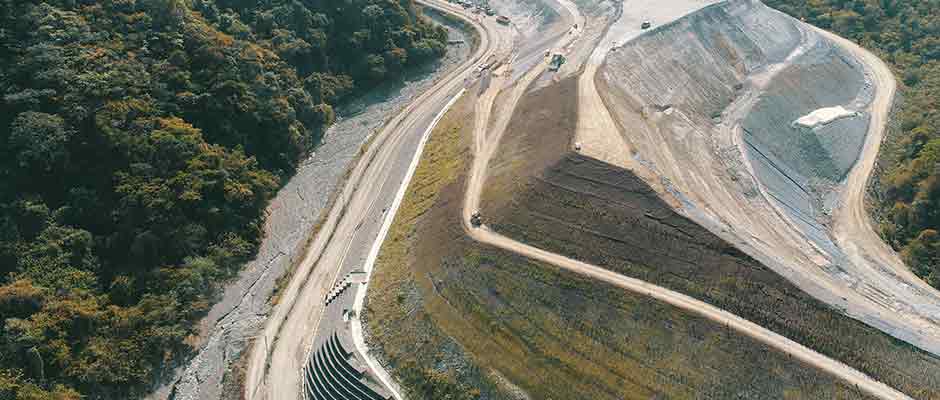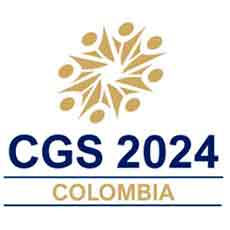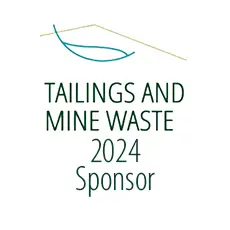Other
Kuusilampi: Pit Design in Challenging Geotechnical Conditions
Wednesday, October 19, 2022, 05:00 PM - 06:00 PM MST
POSTER SESSION: This paper presents the design work that was carried out under challenging geotechnical and hydrogeological constraints owing to the adverse and persistent structures in an otherwise strong rock typical of Nordic environments.
Learn More
Technical Talk
A Review of Vibrating Wire Piezometer Usage in Ultra-Low Permeability and Heterogenous Fractured Rock Environments
Wednesday, October 19, 2022, 11:20 AM - 11:40 AM MST
This presentations proposes that conventional groundwater flow theory cannot explain the full range of VWP responses observed in low permeability environments. The impact of poroelasticity is likely to be greatest in the period immediately after a stress change when rapid increases and decreases in pore pressure may occur as the 3D stress field equilibrates. In the medium term, the poroelastic effects may lead to a faster rate of depressurisation in a low permeability formation.
Learn More
Important Considerations for Pit Slope Design Analyses in Anisotropic Bedded Rock Masses
Wednesday, October 19, 2022, 02:30 PM - 02:50 PM MST
The results of finite difference 3D analyses to demonstrate the impact of bedding obliqueness on slope stability and the advantages of 3D analyses in optimising pit slope angles will be discussed in this presentation. It will be presented by Ian de Bruyn, principal consultant (engineering geology) from SRK Australia.
Learn More
Good Structural Geology and Geotechnical Challenges it Creates
Wednesday, October 19, 2022, 04:20 PM - 04:40 PM MST
This paper focuses on challenges created by uncertainty of fault continuity and the repeatability of additional similar, but unobservable, faults that might impact pit slope stability assessments. If segmented fault systems are observed, defined by faults with limited continuity and rock bridges between adjacent faults of the same system, how can these be practically modelled and used in slope stability analyses?
Learn More
Development and Evaluation of Structural and Geological Models
Thursday, October 20, 2022, 03:10 PM - 03:30 PM MST
This paper discusses the objectives, challenges, and solutions for building appropriate 3-D structural and geological models from data, including factors that are important to geotechnical engineers. The paper also addresses the concept of reliability of the models in practical open pit engineering terms.
Learn More
Understanding Legacy Risk at Open Pit Operations
Wednesday, October 19, 2022, 04:00 PM - 04:20 PM MST
This paper will focus on critical items (e.g. structural model reliability/maintenance, alteration, rock mass, hydrology/hydrogeology, and underground excavation interaction aspects) that can have a substantial impact on short and long-term slope performance.
Learn More
A Review of Shear Strength of Rock Defects using Direct Shear Testing of Natural and Saw-cut Samples
Tuesday, October 18, 2022, 04:40 PM - 05:00 PM MST
This paper discusses the validation and interpretation of shear strength of rock defects using more than 250 direct shear tests of open natural joint and saw-cut samples from a porphyry mine operation.
Learn More
Geotechnical Domain Model Evolution During the Mining Project Lifecycle
Tuesday, October 18, 2022, 04:20 PM - 04:40 PM MST
Knowing what the representative physico-mechanical properties of a rock mass are at any point in time, is required for successful rock engineering. These properties are commonly represented in the “geotechnical domain model” format, for which the input layers often include lithology, alteration, major structures, rock mass fabric, and hydrogeology.
Learn More
Novel Approaches in Geotechnical Classification Using Machine Learning
Wednesday, October 19, 2022, 04:00 PM - 04:20 PM MST
A machine learning (ML) workflow was developed by SRK for geotechnical classification of core box photographs. The methodology involves an assessment of the degree of brokenness of the drill core, which has been defined as the Core Damage Index (CDI). Deep convolutional neural networks are trained and used to identify and map the representative rock mass character and attribute depth values to each interval. The model is trained by labelling a selection of core box photographs with a quantitativ
Learn More
Geotechnical Domaining for the Aktogay Porphyry Deposit supported by Machine Learning Techniques
Tuesday, October 18, 2022, 04:00 PM - 04:20 PM MST
Porphyry geological systems are typically challenging to quanitify through the geotechnical characterization process. The scale of many modern prophyry deposits, and associated rock mass heterogeneity requires a large characterization dataset from which the geotechnical domaining can be done. The presented case study demonstrates a rigourious workflow supported by Machine Learning (ML) to geotechnically characterize a copper porphyry deposit located in Central Asia. The operation comprises two a
Learn More




